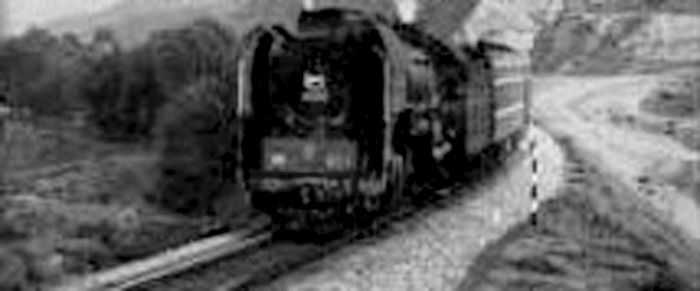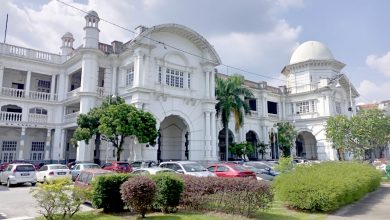The Iron Rooster to Quanzhou


China’s high speed train covers most big cities in China. The first time I took the train when it started it seemed grander and faster. The posher part could be my memory playing tricks but it was certainly faster. Because of incidents due to its speed it is now required to travel no faster than 300kph. It’s still the fastest train but it doesn’t seem such a big deal anymore.
If you are not going anywhere fast I suggest you take one of the old (very old) trains. They serve the very small provincial towns and if you don’t hurry they may be phased out by these unromantic speeding behemoths. I once took the old iron rooster (as Theroux calls them) to Guizhou. The engine was a massive piece of metal, formidable looking, pulling other lesser masses of metal which are only a little less intimidating. The train rises three feet from the platform. They have a step-ladder to assist your access. You can’t simply board at your leisure, only when the guard gives permission. This prevents the rush one sees on Indian railways, and a good thing too because with the passengers go chickens, farm produce and bundles of personal baggage.
The seats are wooden and hard with straight backs. It’s a good thing that access was controlled because soon the coaches were full. The aisles blocked by bundles of clothing, chicken and other farm produce were an obstacle course. These together with their owners discharged along the way and others taken on. Generally it became less crowded as the journey wore. The downside was, it got colder (it was winter) because you lost so much body warmth and you wished it was packed again.
Somewhere along the journey a guard appeared and started giving a spiel on a nicotine-removing toothpaste he happened to have. In case you did not want toothpaste he also had a cure-all balm. It was such a good show I bought both. “This is a clever foreigner who knows what is good value”. And he went on to sing my many virtues. “You all should follow his example”. No one else did. And the train would chug along into the thirtieth tunnel. We appeared into daylight only to go into tunnel 31st not ten minutes down the track. This is a mountainous region. That’s the kind of train journey one should take, not those whose journey is over before it begins.
Like the Shenzhen railway station at the other end, the Quanzhou railway station is equally impressive – big and modern with all the facilities of an international airport. But Quanzhou is not a new city nor is it big by China’s standard.
If you like Chinese tea then Quanzhou is the place for you. It’s the centre of Te Kuan Yin – a green tea. But it’s not just green tea. Quanzhou also has Pu Err and Hong Ta Bao (ZTE’s cheongsam) both of which are red tea (which Westerners refer to as black tea – a misnomer really). There’s a very local tea from a hill just outside Quanzhou. It appears that the Wu Yi Shan (5-1) tea is exceptional. I have not had the pleasure, therefore, I can’t vouch for it.
It seems like every other shop in town is a tea shop. They welcome you to try their tea – no obligation to buy. I must say some of them are outstanding, even to this ranking amateur. However my uneducated palate is suspect so take my opinion with a bit of salt. Let’s say they beat the stuff they serve in our restaurants back home or the rubbish they dish out in coffee shops. There are people who are truly knowledgeable about tea but I think few who have the natural palate for it. Learning about tea is a doctorate course in itself.
Jinjiang is the city next to Quanzhou. In fact they are the same city separated by the Jinjiang River – somewhat like Old Town and New Town only much bigger. If Quanzhou is the centre for tea, Jinjiang is the world capital for shoes. At one time every branded shoe was made here – Nike, Converse, Reebok, etc. but some have relocated outside China because of the rising labour cost. Although a small town (by Chinese standard), Jinjiang has a large expat population – most of them involved in the shoe industry – manufacturing, designing, buyers.
There is a part of Quanzhou called Hwa Shiao Shing Chun (in my bad pinyin) translated as Overseas Chinese District. Apparently in the past many Overseas Chinese who made money abroad returned and build mansions for their retirement or their concubines. However, after 1949 they could not come back and so they left their mansions to their relatives. Today most are neglected although there are signs that they are being gentrified – cafes and interesting eateries. I went to one such, called Xiao Ching Ku Shi (Small Town Story) which is a song made famous by Teresa Teng. The restaurant serves home-style meals to small numbers. It’s a Ma/Pa operation with a very limited menu. The cuisine is Fujian/Hokkien. Many of the dishes will be familiar to Penang people or Hokkiens in Medan. The food is worth returning for but only if you know what to order.
Like in our Old Town, the prices of properties in the Overseas Chinese District have rocketed.
Talking of Old Town reminds me of home. We may not be famous for tea or shoes – although we have a small shoe centre in Tanah Merah – but we have Ipoh White Coffee and the best Sar Hor Fun in the world. Destination Ipoh next.
Yin
The Man from TR


